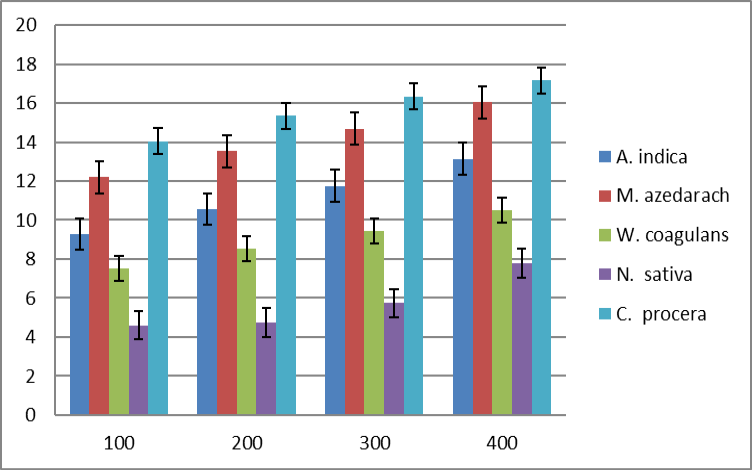In-Vitro and In-Vivo Antimicrobial Activity of Five Medicinal Plants against Virulent Escherichia coli O157:H7 Strain Harboring Shiga Toxin Gene
Asfand Yar Khan1, Syed Saleem Ahmad1*, Muhammad Avais1 and Kamran Ashraf2
1Department of Veterinary Medicine, University of Veterinary and Animal Sciences, Lahore 54000, Pakistan
2Department of Parasitology, University of Veterinary and Animal Sciences, Lahore 54000, Pakistan
* Corresponding author: vetsalim@uvas.edu.pk
Fig. 1.
Zones of inhibition induce by cold aqueous extracts of five medicinal plants against E. coli O157:H7 (All the values are expressed in mean ± standard error.
Fig. 2.
The survival percentage of treated groups post infection. Marked * showed a significant higher survival rate in G6 and G5 (100 %, P<0.01) than control and G1-4 treatment groups.
Fig. 4.
Histo-pathological changes in liver (A, B), broiler heart (C), intestines (D, E,F) and spleen (G).
The encircled area in A (positive control) shows necrosis with empty spaces along with karyorrhexis and diffused congestion in the liver. The encircle area in B shows the diffused congestion in the liver. C Shows extensive presence of inflammatory cells in the myocarditis. D shows disrupted villi (arrows) while the stars in E indicated elongation of the glands of the cecum and lymphocytic proliferation (arrows) in cecum of W. coagulans group Photomicrographs of broiler intestine and spleen group 4. F showes abnormal elongation of the villi of intestine of Nigella sativa treated group encircled area in G showed the infiltration of inflammatory cells, lymphocytes and neutrophils in spleen.













